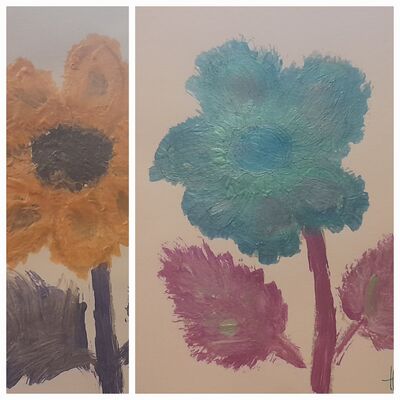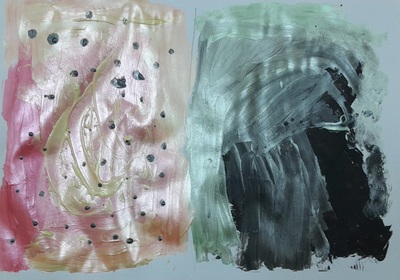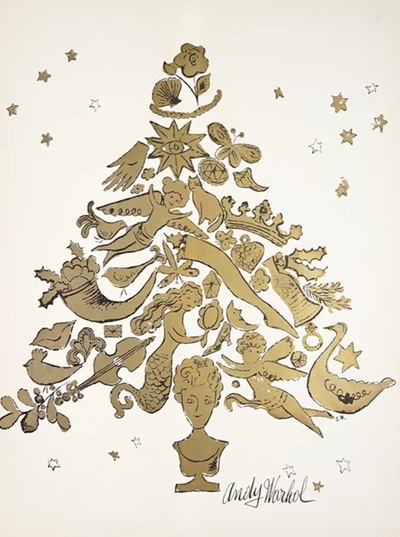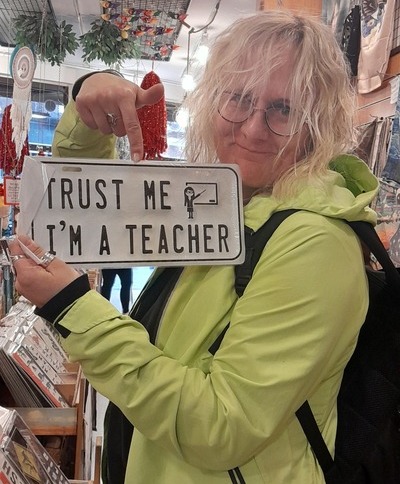
A new series!
Welcome to the new series on the blog! Teaching grammar to young learners is one of my passions, especially that the students are getting younger and younger and / or the context is changing and you find yourself faced with a challenge of coming up with ideas to engage, to present and to practise with people who are still not really ready to deal with abstract terms and the target language goes beyond the easy-peasy bits of ‘is’ is for one cat and ‘are’ is for many (naturally accompanied by gestures and flashcards).
I have been interested in that area for some time already and I have written about before (please check the other emails in that category) but in the recent months, this has been especially present in my life. This year I am teaching in a school with a bilingual programme, and I am a teacher both of the BNC and of the ESL to a mixed ability group and on a random given Monday I may need to teach past simple or comparatives who students who are not the A1 level yet.
Hence this series. I will simply be sharing ideas that I have created or adapted for my students and, naturally, the activities that have worked well. Let’s get started. Comparatives first!
The context at hand
This year I am teaching two classes of year 1 (and of year 3 of the British National Curriculum) and I am responsible for their BNC year 3 curriculum as well as their ESL classes. Consequently, we have about one million different aims and the two most important among them are the following: developing the kids’ language skills and realising the aims of the BNC. My students are 6 and 7, they are in their year 1 of the state education. They language levels vary from pre-A1 to early A2. In case you are wondering regarding the aims, bilingual education to non-quite-so-bilingual kids is a different planet and I am only at the start of my journey but the main objective is that we are going to be closer to bilingual when we get to our year 4. It is all a process.
The most practical implication for me as a teacher is that we do not follow a linear curriculum, typical of foreign language learning and, that, for example comparatives and, subsequently, superlatives, is our target language in the fifth month of our year 1. As one of the examples. That, in turn, means that I am teaching my very young kids some advanced grammar points and I am trying to do it the best I can. I am hoping that some of these ideas will be useful to my fellow teachers out there.
Ideas for teaching and practising comparative forms
Presentation
- My students already know a range of adjectives, because we have learnt lots of emotions, adjectives to describe characters and also adjectives to describe objects. My main aim of it was to give the kids a range of vocabulary which we can use in telling stories, retelling stories and describing pictures, all a part of my storytelling campaign. However, it was absolutely necessary to choose a very narrow range for the grammar presentation stage of the lesson and for me it was ‘bigger’ and ‘smaller’, leaving behind, for now, the other short adjectives, the long adjectives, superlatives or the irregular adjectives. For now. As soon as we become familiar with one, we will move onto the other. For example, in one of the exercises, I decided to ‘smuggle’ longer and shorter, just to see how the kids react.
- We revised all the adjectives and we had a short slot in which we described animals. I was showing some images and asking students ‘Is it big or small?’. All this time these two words were written on the board.
- Afterwards, I stood right in front of the board and added, in a different colour, -er, to our words, changing them into ‘bigger’ and ‘smaller’ and then I uncovered it, faked surprise and asked ‘What happened here? What’s this?’ and I elicited the letters, asking the kids to read the new words. Afterwards, I demonstrated with these flashcards aiming at showing the difference between ‘big’ and ‘bigger’ and, naturally, ‘small’ and ‘smaller’ using a set of flashcards. It could go along the following lines: ‘Is the tiger big or small?’ ‘It’s big’. ‘Yes, it is. But, look, the elephant is BIGGER’. The same was done for small, with a mouse and a butterfly. I also used gestures to highlight the meaning. With these two adjectives, I tend to move my hand up, gradually for ‘bigger’ and move it closer to the floor or the table, gradually, for ‘smaller’. We repeated the same conversation about some other animals, trying to elicit the structure from the kids.
- The next step was putting the key sentence on the board by adding flashcards to our words on the floor, creating a sentence made of visuals and words. The great advantage of this activity is the fact that you can adapt and create the sentences by replacing the flashcards and reading the sentences together. That, actually, will be the first controlled practice activity.
Practice
- Bigger or smaller?, a guessing game: the teacher holds a pile of flashcards with animals, all the cards face de teacher takes out one card and shows it to the kids. Then the teacher asks ‘Bigger or smaller?’ and the kids make their decision, saying out loud ‘Bigger!’, ‘Smaller!’. Afterwards, the teacher takes out a card at random and the class check. Afterwards, the game continues with another card. The main aim of the game is to drill the key words in a simple way and to reinforce the idea. It can also be done with number flashcards or with school objects flashcards.
- Who is bigger?, a simple movement activity in which the students compare themselves, in pairs, and the class decide who out of the two is bigger. The aim is to produce simple sentences, to personalise the target langauge and to involve the whole group, because, of course, only the students in the classroom are able to tell who, in fact, is different. It might be a good idea to think about the careful pairing of the students, choosing those who get on with each other or are friends to minimise the negative impact of ‘being smaller’. I also like to pair myself up with the kids and to highlight that they are going to grow bigger and bigger and bigger (one more chance to use the target language!). I have also ducked or sat on the floor, as a joke, so that the child could be bigger than me, at least for a moment.
- Magic Bag, an object description game that we have already used in our classes. This time, however, the kids put their hands into the bag to describe the object they are holding but this time they do it twice. In the end, they have to objects they have to compare using ‘bigger’ and ‘smaller’ or any other adjectives at the later stages of this unit.
- Who is bigger? Who is smaller?, a simple flashcard games whose main aim was to get the students to produce full sentences with bigger and smaller in a more active way. The game starts with the teacher taking out a card with an animal and letting each student take one, too and to keep it secret for now. The teacher reveals the card and says ‘I am a dog. I am small. Who is bigger? Who is smaller?’. The kids take turns, to reveal their animals and to produce the sentence. At the same time, they get up and take their place on the left of the teacher (if they are smaller) or on the right (if they are a bigger animal). In the end of the round, all the kids stand in line, at the board, lined up, from the smallest to the biggest animal. Since they take turns they can produce all the relevant sentences, i.e. ‘I am bigger than a dog. I am smaller than a tiger’ and so on. We play this game a few rounds. It might be necessary to give out one card per pair of students if the group is big.
- Draw it!, a reading and drawing activity that I created to give the students a chance to reinforce the idea of the concept behind comparatives and to check understanding. The only thing that is necessary for this game is a piece of paper (or a notebook) and markers and crayons and a handout which you can find here. The paper is printed (only one copy) and cut up, all the cards end up in a bag or in a box. The kids take turns to take one of the cards, they read the sentence, a few times and everyone is drawing a relevant picture. The teacher monitors. The game can be later develop into a more SS-centred activity, as soon as the kids ready. In this adaptation, the key structure is written on the board: _____is bigger than_____ and _______is smaller than ______ and the kids themselves take turn to dicatate a sentence to draw.
- What is bigger?, a reading and writing activity, also on a higher level in which I wanted to encourage a more creative and a more productive approach to the target language. You can find the handout here. This was the first more advanced activity which we did together, with a whole set of different adjectives at the same time. And the kids were ready! Everyone got their copy of the handout and they were supposed to trace the comparatives and then to create their own sentences with their own choices.
- Wordwall activities were included in these lessons, too, to give us a chance to practice the target language. Here are some of those that I used: missing words (only bigger and smaller, I had to help read the sentences), let’s compare (either using only the basic bigger and smaller but also to give the kids a chance to use more complex structures, if they are ready, this btw is an activity that I found in the community resources on wordwall and adapted), and a simple set of cards to play ‘Bigger or smaller’ but on the screen.
All of that, on top of whatever you have in your coursebooks. The next steps will be: adding more of the short adjectives and then, eventually, the long adjectives, too. But, as they say, that is a story for another day…
Happy teaching!
*


































